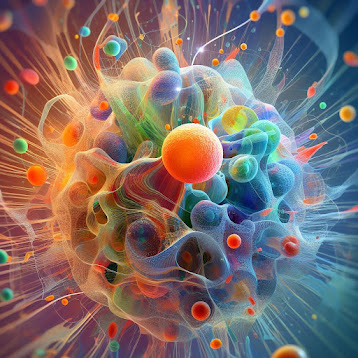Stem cells are a unique type of cell in the human body with the remarkable ability to develop into various specialized cell types.
They are characterized by
Totipotent: Totipotent stem cells are the most versatile and potent type of stem cells. These cells have the ability to give rise to all cell types of the organism, including the embryonic and extraembryonic tissues. In other words, totipotent cells have the potential to differentiate into any cell type of the body as well as the tissues that support embryonic development, such as the placenta. The zygote, which is formed by the fusion of a sperm and an egg, is considered totipotent as it has the capacity to develop into a complete organism.
Pluripotent: Pluripotent stem cells are slightly more specialized than totipotent stem cells but still possess a remarkable ability to differentiate into a wide range of cell types. Pluripotent cells have the potential to give rise to cells derived from all three germ layers: ectoderm, endoderm, and mesoderm. These germ layers eventually develop into various tissues and organs of the body. Pluripotent stem cells can be found in early embryos (embryonic stem cells) or can be generated in the laboratory through reprogramming techniques, such as the induction of pluripotency in somatic cells to create induced pluripotent stem cells (iPSCs).
Multipotent: Multipotent stem cells are more specialized than pluripotent stem cells and can differentiate into a limited range of cell types within a particular lineage or tissue. They are typically found in adult tissues and organs, such as bone marrow or umbilical cord blood. Multipotent stem cells can give rise to specific cell types within their tissue of origin. For example, hematopoietic stem cells in the bone marrow can differentiate into various blood cell types.
Unipotent: Unipotent stem cells have the lowest level of potency among stem cells. They can only differentiate into a single cell type, usually a specific cell type within a tissue or organ. Examples include basal cells in the skin, which can differentiate into only skin cells, or spermatogonial stem cells in the testes, which can give rise to sperm cells
Application of stem cells
Stem cells have significant applications in various fields of research, medicine, and biotechnology. Here are some notable applications of stem cells:
Development: During embryonic development, stem cells are responsible for the formation of all the body's tissues and organs. They differentiate into various specialized cell types as an embryo grows.
Tissue Repair and Regeneration (Regenerative Medicine): Stem cells hold great promise in regenerative medicine, which aims to repair, replace, or regenerate damaged or diseased tissues and organs. Stem cells can differentiate into specialized cell types and, therefore, can be used to replace damaged cells and tissues, such as in the case of organ transplantation, tissue engineering, and wound healing.
Disease Modeling: Stem cells, particularly induced pluripotent stem cells (iPSCs), can be generated from adult cells and reprogrammed back into an embryonic-like state. These iPSCs have the potential to differentiate into various cell types and can be used to create disease models in the laboratory. By differentiating iPSCs into specific cell types affected by a particular disease, researchers can study the disease mechanisms, test drug efficacy, and develop personalized medicine approaches.
Drug Discovery and Development: Stem cells, including iPSCs, are valuable tools for drug discovery and development. They can be used to create in vitro models of human cells and tissues, allowing researchers to test the safety and efficacy of potential drugs. These stem cell-based models can reduce the reliance on animal testing, provide more accurate predictions of drug responses in humans, and accelerate the drug development process.
Cell-Based Therapies: Stem cells can be utilized in cell-based therapies for various conditions and diseases. For example, hematopoietic stem cell transplantation (HSCT) is a well-established therapy for treating blood-related disorders, such as leukemia and lymphoma. Additionally, mesenchymal stem cells (MSCs) have shown promise in treating conditions like osteoarthritis, heart diseases, and neurological disorders. These stem cells can modulate the immune response, promote tissue regeneration, and provide therapeutic benefits.
Basic Research and Developmental Biology: Stem cells are invaluable in basic research to better understand developmental processes, cell differentiation, and tissue formation. By studying how stem cells differentiate and develop into specialized cell types, scientists gain insights into normal development, disease progression, and potential therapeutic interventions.
Personalized Medicine: The use of patient-specific iPSCs allows for personalized approaches in medicine. These cells can be generated from an individual's own cells and differentiated into the desired cell types. By studying the patient's own cells in the lab, researchers can develop tailored treatments and therapies based on the individual's unique genetic makeup, reducing the risk of rejection or adverse reactions.

Comments